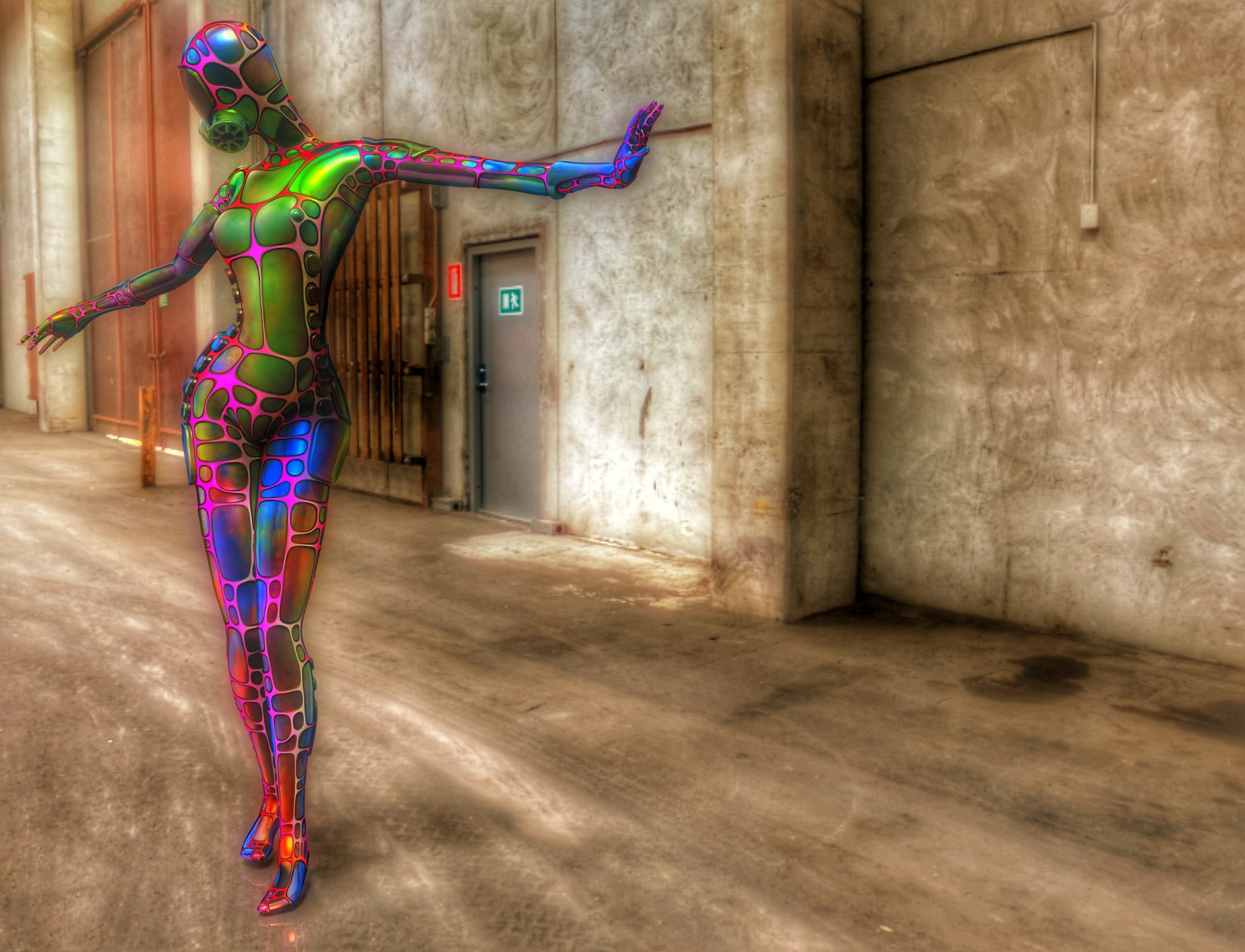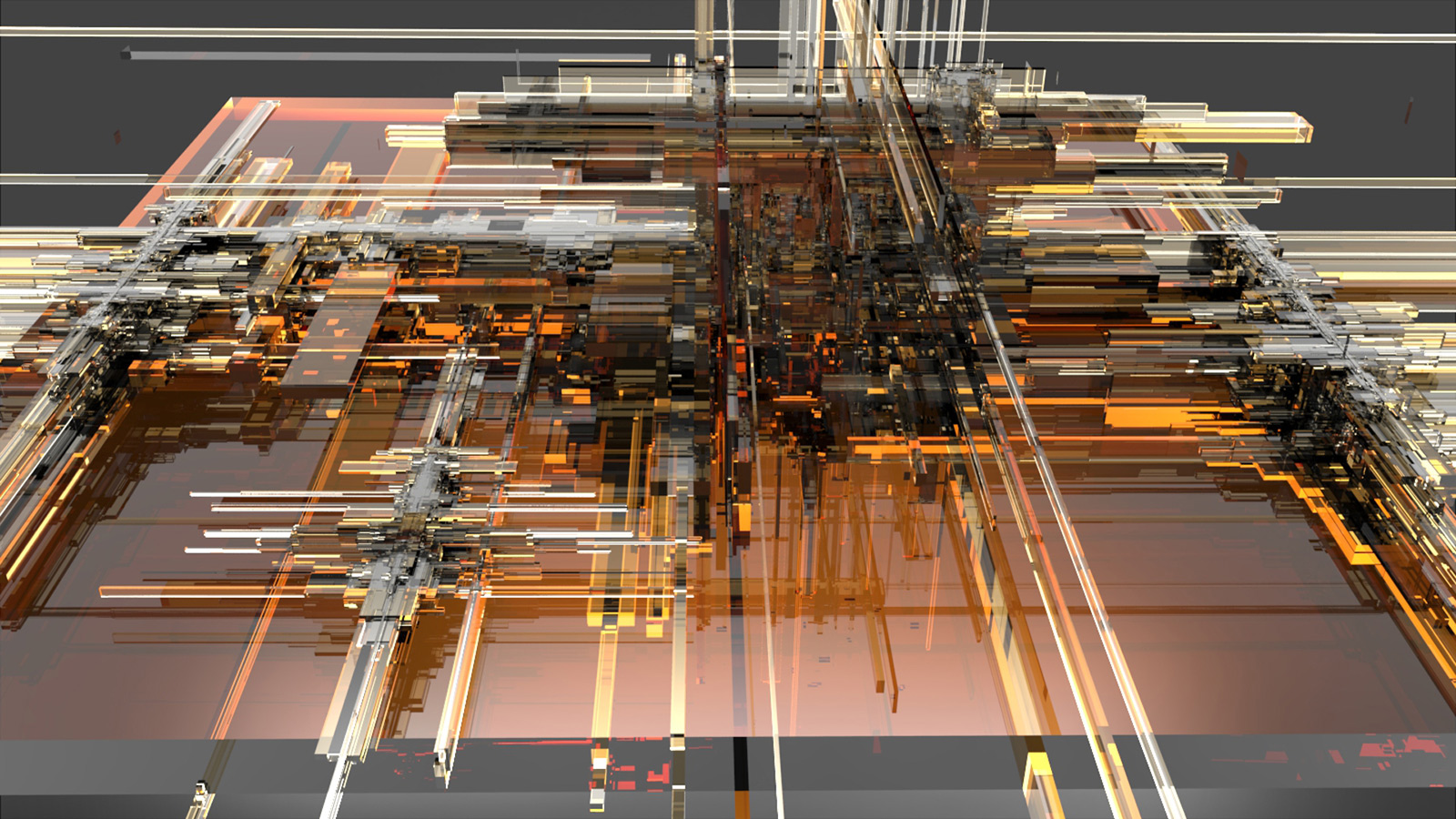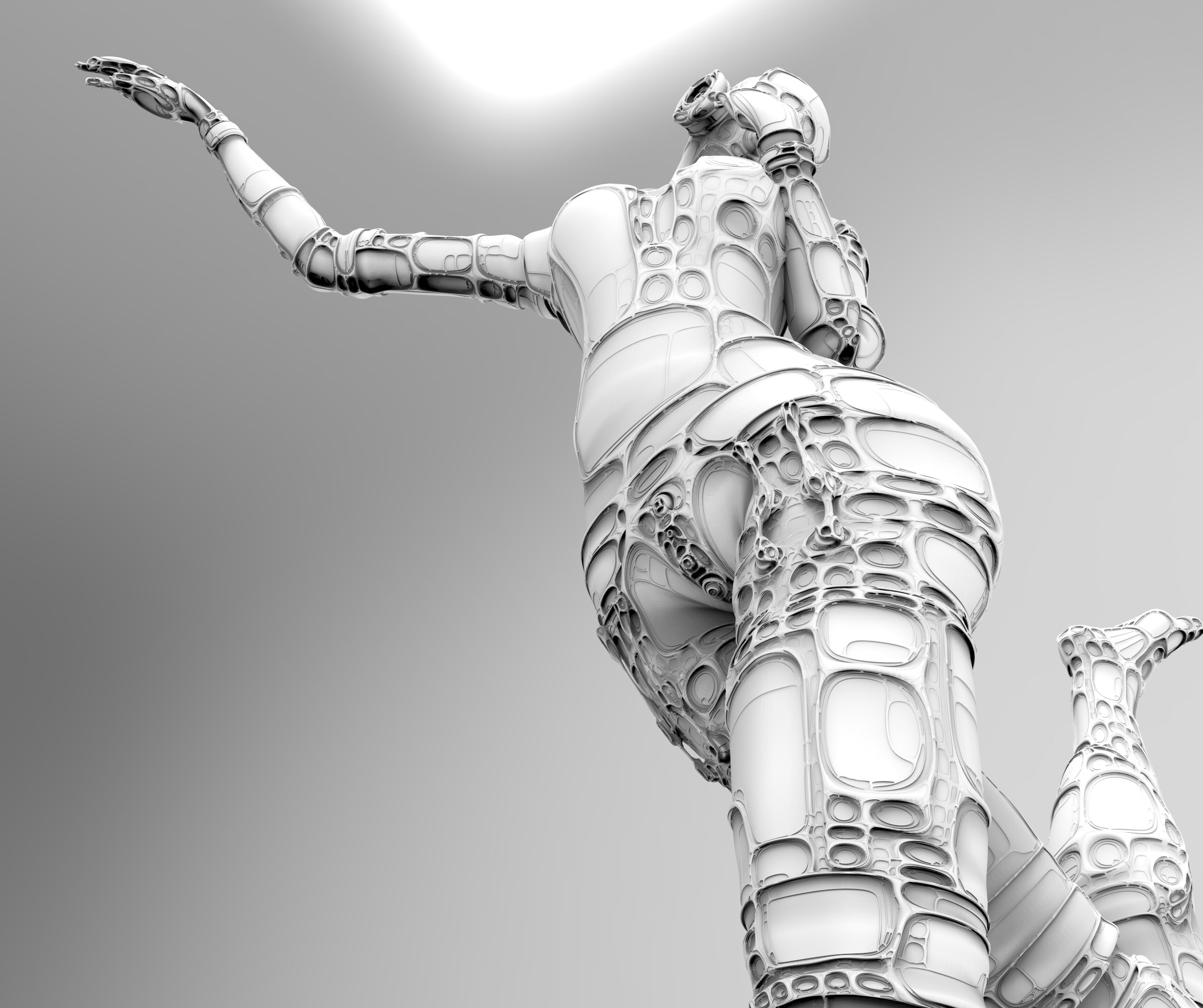oops, I forgot one.
Attachments

oops, I forgot one.

Top of the line Material… simply wonderful.
It matches the elegance of the model.
Brava!
glad to see you again.
those materials and renders look great.
Hey Mealea, You are right about Keyshot being TOOOOOOTALLY addicting.
If you are like me, you are spending HOOOOOOURS trying out different materials
and lighting scenarios on ZB models.
Very exiting! Let see more!

Oh my god Paleo, that thing is amazing!
hmm, volumetrics, you mean for ‘fog’ stuff and so on?
i don’t think keyshot can do that.
but with the depth pass and photoshop there are some possebilities.
ow, you already knew that, hahahaha.
convert them to 8 or 16 bits first.
AHHA!!!
THANK YOU!
I had no idea.
16 seems to work best, 8 was a all grainy and I think levels helps
Hello Mealea,
At first I tought: Depth Pass, Huh? I don’t have one of those…
And then I remembered that you have the Pro version and I don’t.
So I did the next best thing and purchased it…
OK, So now I see what you mean by weird format and difficult to handle.
Exr is a “deep” format with 32 bits channels so that it has way more
info than say 8 or 16 bit images.Personally, I think this format is a bit of an
overkill for ZBrush and/or Internet users as Jegs are, on average, used and the
32 bit stuff is lost in the conversion. If ,conversly, you were to print stuff
however, then you would probably be well advised to use .exr .
When I saw my first Depth Image I tought Whoa! this isn’t the kind of Depth Map
I’m used to! Way too overexposed…so I used the ajustment/exposure tool to make
the Depth Map stand out with emphasis on the OFFSET slider. Then to add accuracy
to this I used the eyedrop in this tool to determine to closest ( white eyedrop )
and furthest ( black eyedrop )and soon enough I had a working Depth Map.
So ,if you still have issues with this I suggest you try this method out. Works for me.
Attached is the “original” image with its Depth Pass and the other one is the image after
some fancy photoshoping. Here I used the D. Map for depth and the red tint "inside " the image.
Wow, nice renders, Mealea!
So this was all rendered in KeyShot?
Your latest ones look fantastic, so I guess Keyshot really is all it’s cracked up to be. I’m planning to get Keyshot (the one that uses can only be used with ZBrush exclusively) as well. I hear it’s super user-friendly and can give results that are pretty much on par with VRay and Cycles. After looking at your awesome renders, I’m starting to believe it. 
I did watch a few tutorials on Blender Cycles, but it all seems pretty complicated, which made me start considering Keyshot. No fuss, no muss. I was a little concerned about the alleged lack of control, but if I can render out anything that’s similar to your renders, I’m a happy camper.
And thanks again for the explanation and recommendation, Mealea! 
GRIN!
Its a funny thing with KeyShot, you can actually use it in the same way you use Cycles, only it’s easy and experimenting actually accomplishes something visible. I think it might even have a node editor but Im not sure and dont care!
For example I can apply a simple diffuse shader and start angling it in KeyShot, and end up with high gloss, metallic, liquified, glow in the dark purple goo if I wan. If I tried that in Cycles I would have to read and ask for help for a couple of weeks even though I know HOW cycles works sort of, it’s so tedious I can’t remember what anything is called, where it is, or which of ten million settings each thing needs for the next fifty parts to work. In KeyShot it just works, even if you manage to make something that makes your computer freak out, you can still see what’s happening.
This is not to say that KeyShot is something you instantly just know, like Sculptris or something, it does have some strange little quirks.
One quirk is you are stuck inside of a sphere, I dislike this and think its a problem, but this is because they need to map these HDRI’s onto something because thats where most of your light usually comes from. I mostly turn the sphere black and make my own lights as the HDRI’s are either someone else’s, or dont look how I want them. Making your own HDRI images is apparently something that requires insanely expensive cameras and stuff. Although actually you can render HDRI’s in Blender if you want to deal with Cycles! Its unreal, honestly, how many hoops you need to jump through at times.
What I am doing is learning Blender, WHILE I am still able to render things, Im not learning Cycles because I dont have time, Im using Blender for rigging and if they stop changing it, the simulation stuff and maybe eventually animation. I learned how to do a number of different types of simulations in Blender and then they changed how they work so all that learning, frustration and effort got me nowhere. Cycles is like that too, it keeps changing and getting harder and harder.
KeyShot started off easy and got easier even though they keep adding new stuff.
More stuff, to many polygroups to color…




@Melea:
Its a funny thing with KeyShot, you can actually use it in the same way you use Cycles, only it’s easy and experimenting actually accomplishes something visible. I think it might even have a node editor but Im not sure and dont care!
For example I can apply a simple diffuse shader and start angling it in KeyShot, and end up with high gloss, metallic, liquified, glow in the dark purple goo if I wan. If I tried that in Cycles I would have to read and ask for help for a couple of weeks even though I know HOW cycles works sort of, it’s so tedious I can’t remember what anything is called, where it is, or which of ten million settings each thing needs for the next fifty parts to work. In KeyShot it just works, even if you manage to make something that makes your computer freak out, you can still see what’s happening.
This is not to say that KeyShot is something you instantly just know, like Sculptris or something, it does have some strange little quirks.
One quirk is you are stuck inside of a sphere, I dislike this and think its a problem, but this is because they need to map these HDRI’s onto something because thats where most of your light usually comes from. I mostly turn the sphere black and make my own lights as the HDRI’s are either someone else’s, or dont look how I want them. Making your own HDRI images is apparently something that requires insanely expensive cameras and stuff. Although actually you can render HDRI’s in Blender if you want to deal with Cycles! Its unreal, honestly, how many hoops you need to jump through at times.
What I am doing is learning Blender, WHILE I am still able to render things, Im not learning Cycles because I dont have time, Im using Blender for rigging and if they stop changing it, the simulation stuff and maybe eventually animation. I learned how to do a number of different types of simulations in Blender and then they changed how they work so all that learning, frustration and effort got me nowhere. Cycles is like that too, it keeps changing and getting harder and harder.
KeyShot started off easy and got easier even though they keep adding new stuff.
Wow. Definitely going with Keyshot, then.
I watched a couple of blender tutorials for rendering using Cycles, and the nodes system seems quite complicated. The other thing about Blender is that, as you said, each new version makes small changes to the UI, and by the time you adapt to it, there’s already another new version.
More stuff, to many polygroups to color…
I’ve been meaning to ask, how did you model something so intricate? It’s beautiful.
I always enjoy the creativity in this thread. And your signature (Mealea).
About Blender: I have the same problem Skyways 128 mentions, namely the updates that everytime bring new stuff and change details (or larger parts) in the interface.
I have the same problem with Krita for example.
BUT: I have found the solution. And it’s a simple one.
One evening, not so long ago I shut down my puter and decided to give up on Blender. But then, lying on my bed I suddenly thought: why always update and upgrade? Much great art has been made with the version I have, and even with previous versions. Why must I always keep running after the newest whilst I don’t even know the basics? And this is really the solution.
With Blender there is no need to grab that latest (and greatest) at that upgrade offer. No money is involved ( unless you decide to support the developement) . So I decided to stick with what I have now and not upgrade anymore untill I know the soft I have here and need more.
Same goes for Krita.
Since that moment, the pressure is gone, and now I can invest the energy wasted on ‘running after the train without ever catchin it’ in trying out things and enjoying what I have.
I agree with you. Really.
But some day in our lives we will have to decide whether we will keep following the herd or go our own way.
Practically speaking: I would and will always upgrade/update ZBrush. Because I can trust it 100%. I would never trust Microsoft. I am still at Win7Pro and will stay with it. My neighbours have Win10 because they chose for it, and I cannot help them. If Pixo ever release a Linux version, I follow.
I do not have Keyshot. Because K. is for objects, not for scenic images.
See, the problem is that if someone did not start using most of these softs at version 1, they will be running after the facts for the rest of their upgrades. There is no time to catch up. Unless you concentrate on what you have before you try to integrate the new. I’m pretty shure you know the situation: you look for tutorials on, say, Krita, and many of the basic ones are ten years old. Different interfaces, different tools, different options etc etc. The strength of free soft is also their Achilles’ heel: they update constantly, eliminating bugs, but they also change interfaces, add new tools and functionality and whatever you thought you knew has to be replaced by something else. Great if you’re a higher level user, who knows the current version, but bad if you try to learn.
That’s why it can be good to remember that that outdated version has brought us many a great work of art. And that it is far less stressy to learn something that comes with good tutorials than to try and adapt to yet another as good as undocumented change.
Of course this is my point of view and nothing more. I do not claim being right as that is not my style.
@Mealea:
I ought to point out that while I am encouraging you to get KeyShot, it’s friggin great, I am NOT discouraging you from learning Blender.
Blender is a full and complete 3D package that is (according to the head of the graphics department at Pixar) as good as what they use at Pixar.
Blender and specifically Cycles IS harder by far than KeyShot, but it’s something to learn, you can make an entire move in Blender. It drives me nuts, but I love it.
Many thanks for the advice!
I’m still using Blender for retopology and making hard surface assets for illustrations, although I’m admittedly a little intimidated by Cycles. I’ll look up some tutorials and give the nodes system a try.
I suspect I may have been watching the “wrong” tutorials. Andrew Price’s tuts are pretty amazing, but he also tends to gloss over the nodes parts, like he expects you to already have a basic grasp of the system.
I’ll have to try looking for some beginner level Cycles tuts to get a feel of how things work.
The detail you are looking at is discussed in this thread at length. It what Michalis calls Sculpting with UV Displacement. Though I only used a little of that for this stuff and just at the end.
Basicly I started off with a base mesh I made in Sculptris, refined and retopologized it in ZBrush, and went at it with Zmodeler until I had something fun. Then I sent that into Blender, rigged it (baddly) and then posed it. Then back to ZBrush for some fixing (elbow joints got all mangled and stuff from bending due to crappy rigging).
Once all that was done I gave it UV’s using PUV, turned the UV’s into PolyGroups, GroupLooped those after subdividing once, and then extruded the loops using the EdgeLoop tool. Then I did the same thing again using GUV.
Its a LOT of fun and easy to do, look further back, there’s a LOT of tutorials in this thread for this stuff, AND Michalis can do it in Blender!
Have a look at this thread on BlenderArtists:
https://blenderartists.org/forum/sho…-displacements
I never managed to figure out this process he’s doing, and once I got close they changed stuff again and by then I was digging into rigging and having some success.
Thanks again!
And yeah, that’s the annoying thing about Blender. I keep having to adjust to hotkey changes and whatnot with almost each new version.
Truth be told, Blender retopo isn’t great, but it IS less “messy” than going the zsphere retopo route. I hate whenever I accidentally select the rigging zsphere, and I end up having to exit and redo everything. On the other hand, I haven’t tried the topology brush, so maybe that might be easier to use than zsphere retopo.
And many thanks for the hint on keeping the old settings! It’s probably a relatively new feature. The first time I used Blender was 2013, which was a bad enough experience that I stayed away from it until about a year ago. The UI’s become much more user-friendly since then.
I agree that Price makes some really awesome tutorials, and many of them contain valuable tips. It’s just that they’re not exactly for beginners, which really isn’t his fault. Now that I’ve sort of familiarized myself with the UI, everything starts to make a whole lot more sense. But when it comes to sculpting, ZBrush is still the reigning king, bar none. For hard surfaces, though, I still find myself more comfortable with Wings 3D and Blender. ZBrush’s dislike of n-gons makes it kind of hard edit topology, as the UI automatically creates new tri’s the second you delete an edge. That said, ZModeler’s still great for base meshes or simpler hard surface assets like knives and smartphones.
Anyways, I wonder why the devs came down so hard on him. Although, some people don’t really like him and say he’s arrogant. It seems like they tend to misinterpret his articles.
They come down hard on anyone who questions them I think.
I dont think he’s arrogent, I think he is actualy rather fun, and cute in a very streight laced way.
Things like this make my mind bleed:
But I’m watching it ALL anyway in the hope that at least something will make sense.
Yeah, he does create a very comfortable and relaxed atmosphere in his videos. I like that he never tries to get technical and throw around jargons. All in all, I really enjoy his tutorials.
Things like this make my mind bleed:
https://www.youtube.com/playlist?lis…11C8C41F1AFBAB
But I’m watching it ALL anyway in the hope that at least something will make sense.
Wow. I’ve heard that rigging is an immensely complicated process, but that long list of tutorials is…well, it speaks for itself. :lol: That said, what’s free is good, and it probably means that they’ll be giving very detailed explanations on the subject–always a good thing.
Comparatively, I think ZBrush’s zsphere rigging is more user-friendly. At least it looks that way. I saw a tutorial on it once, and it just took about 15-20 minutes in real time for the guy to complete his rig of a human female model.